Craving for Something That Doesn't Exist
Gouache on watercolor paper, 24" x 18"
"Craving for Something That Doesn't Exist" delves into the universal pursuit of the unattainable and the profound weight of yearning. Executed in rich gouache, the painting portrays a solitary female figure crouched in an almost fetal position, her emaciated form emphasizing fragility and vulnerability. The muted tones of her body sharply contrast with a vibrant, splattered red and black background, evoking a sense of turmoil and emotional distress.
Her dark, flowing hair enhances the somber mood, drawing attention to the physical and emotional toll of her desire. Layered washes and subtle gradients create a dynamic interplay between light and shadow, symbolizing the tension between aspiration and reality. Beyond the figure, blurred forms and melding colors represent dreams perpetually out of reach, while the surrounding negative space embodies a void of unfulfilled longing. This evocative composition invites reflection on the human condition and the relentless quest for that which remains beyond grasp.
Her dark, flowing hair enhances the somber mood, drawing attention to the physical and emotional toll of her desire. Layered washes and subtle gradients create a dynamic interplay between light and shadow, symbolizing the tension between aspiration and reality. Beyond the figure, blurred forms and melding colors represent dreams perpetually out of reach, while the surrounding negative space embodies a void of unfulfilled longing. This evocative composition invites reflection on the human condition and the relentless quest for that which remains beyond grasp.
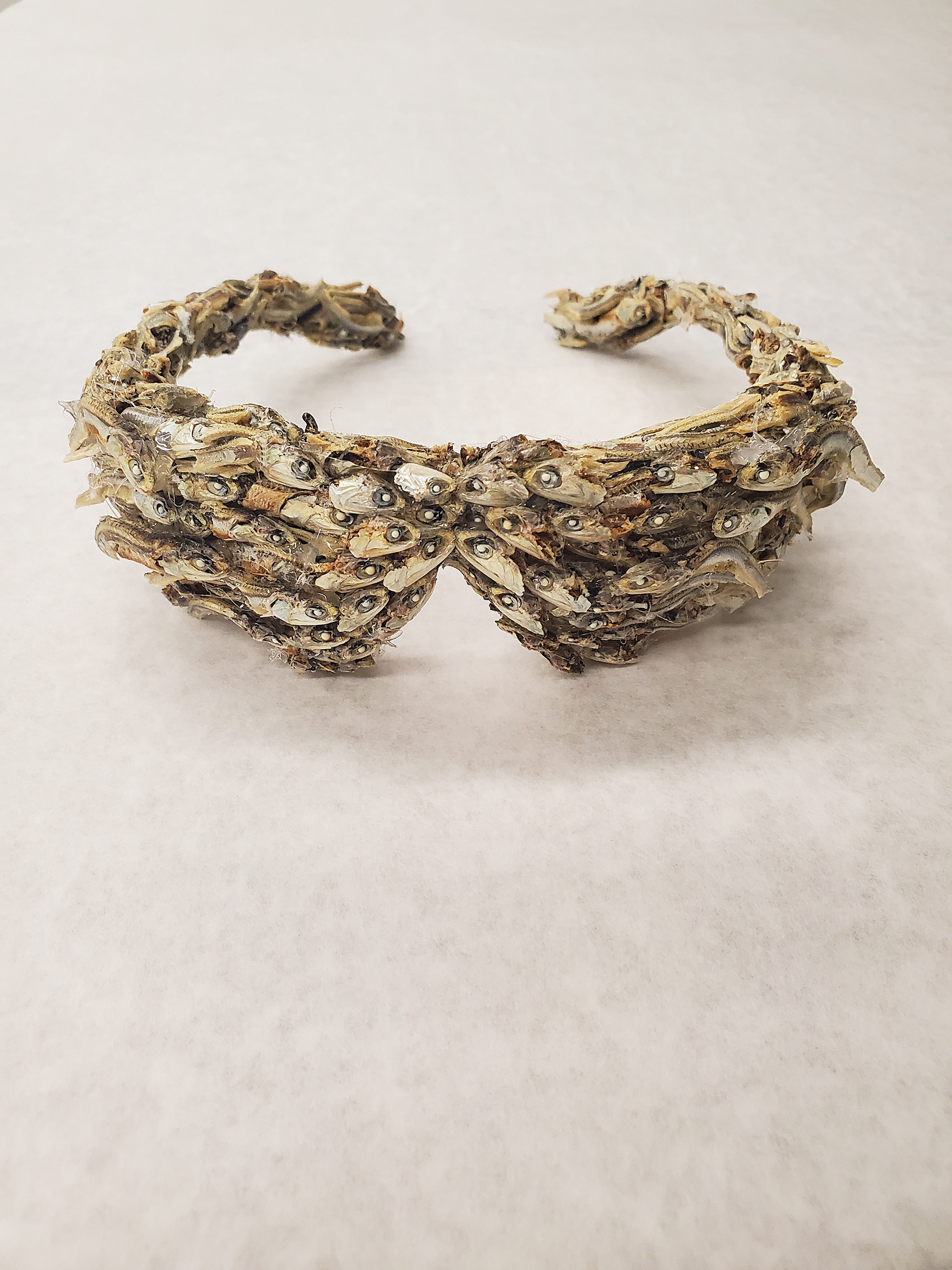

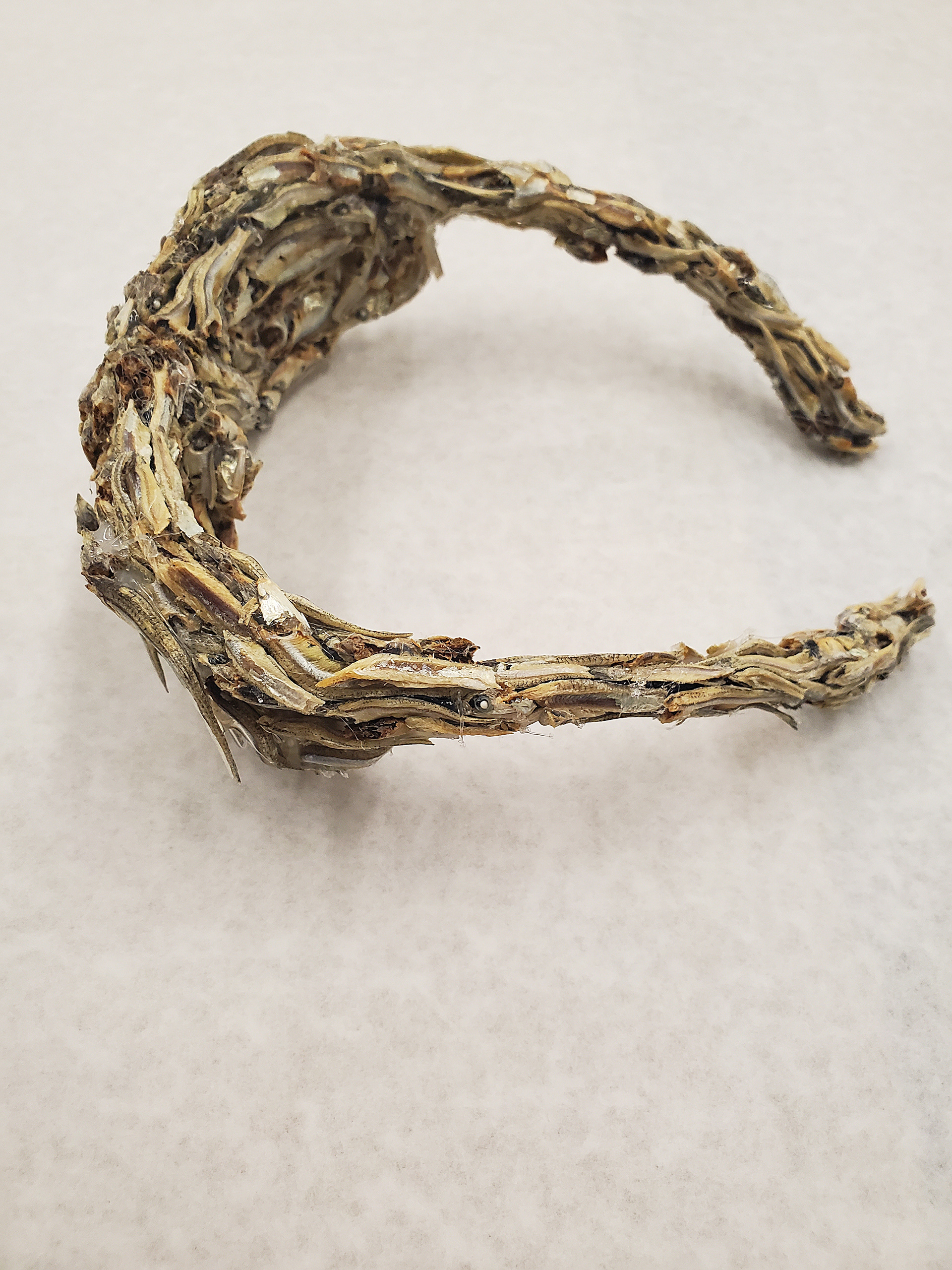

Blurred Vision
Artist's prescription glasses, hot glue, and dried whole
fish, 5.5" x 5"
This work is a visual expression of the artist’s personal experience with vision fundamentally informed by their sensory processing disorder and optic abnormalities. For the artist, seeing is not a seamless, reliable process but instead one which requires aid and resembles the movement of a fish shoal—dynamically blurred, filled with patterns, and forming a visual approximation of reality. Like shoals that create collective motion from individual, shifting elements, the artist’s visual perception arises from fragmented sensory signals that coalesce into an ever-evolving interpretation of the world. This is an invitation for viewers to reflect on their own relationship with vision and how it shapes their perceptions of reality.
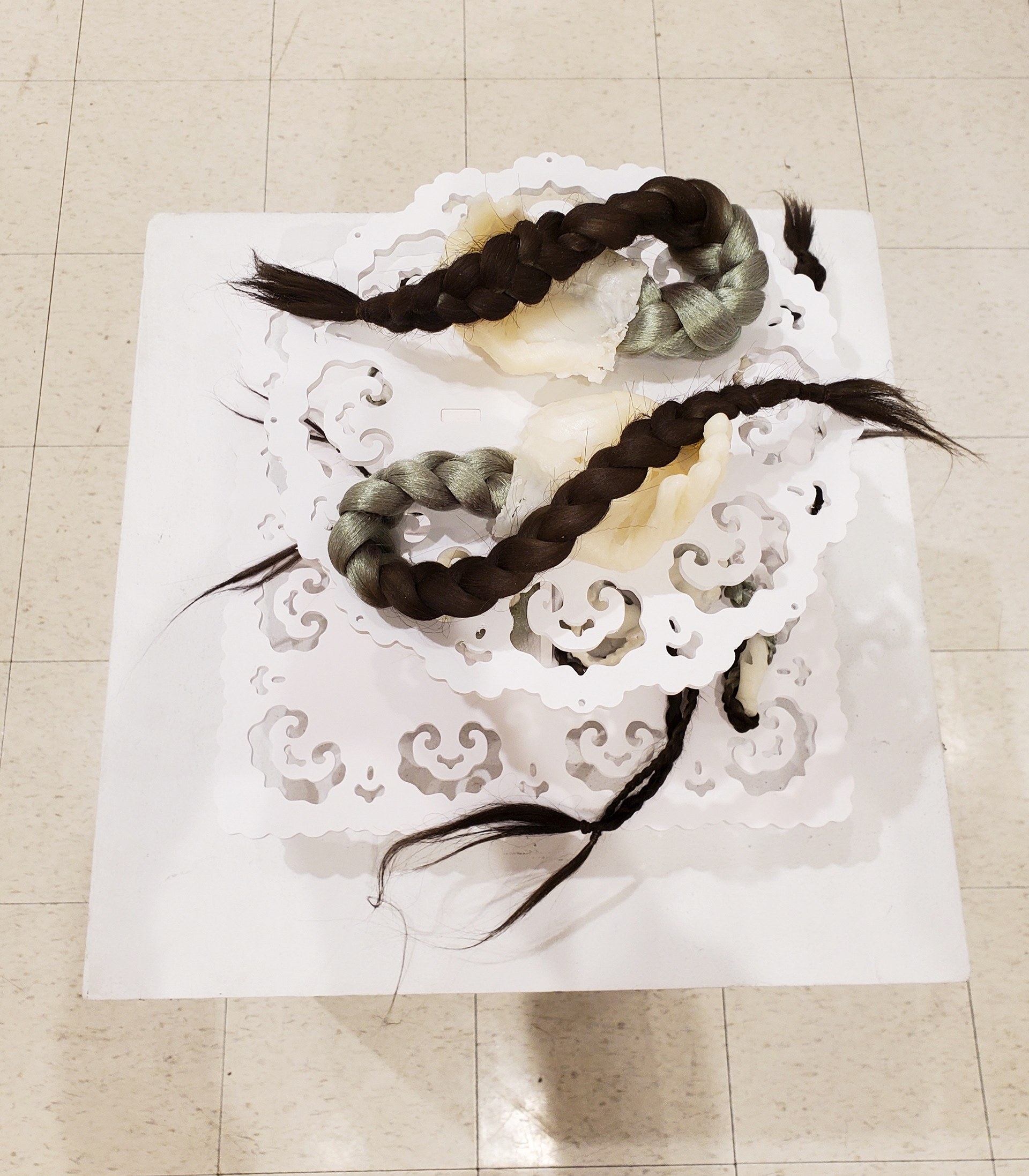
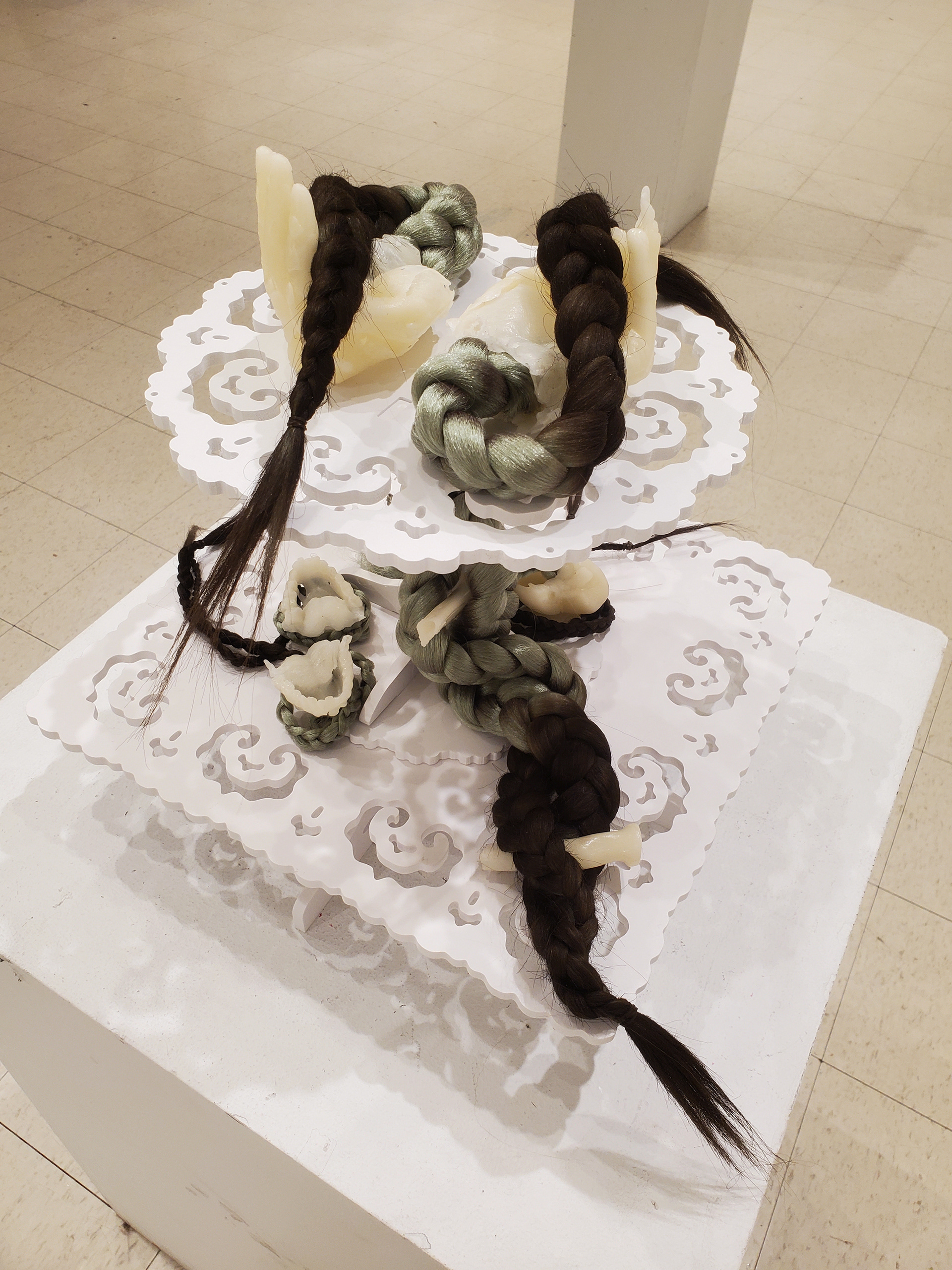

Hard to Stomach: An Elegy to My Spectral Ailments
Wax cast parts of the artist's body, human bone, hand-dyed
Wax cast parts of the artist's body, human bone, hand-dyed
human hair, and a dessert serving platter, 20" x 20" x 24"
Navigating life as infirm young person is a paradox—your lived reality is often dismissed or rendered invisible because of my appearance. This paradox is heightened to a greater degree given my professional career as a fashion model. Society glorifies youth as a time of vitality, exploration, and boundless potential, but for those whose bodies betray that ideal, this narrative becomes alienating and dissonant.
This sculpture confronts the viewer with the fragmented, ghostly echoes of physical ailments and medical trauma I’ve experienced all served atop a dessert platter, an object symbolic of consumption and indulgence. It is a visual assertion of my reality in defiance of a Western cultural framework that prizes youth and health, particularly in femme bodies, as commodities to be consumed. Here, unsettling, intimate aspects of my lived experience are laid bare forcing viewers to confront their own perceptions towards beauty, illness, and consumption.
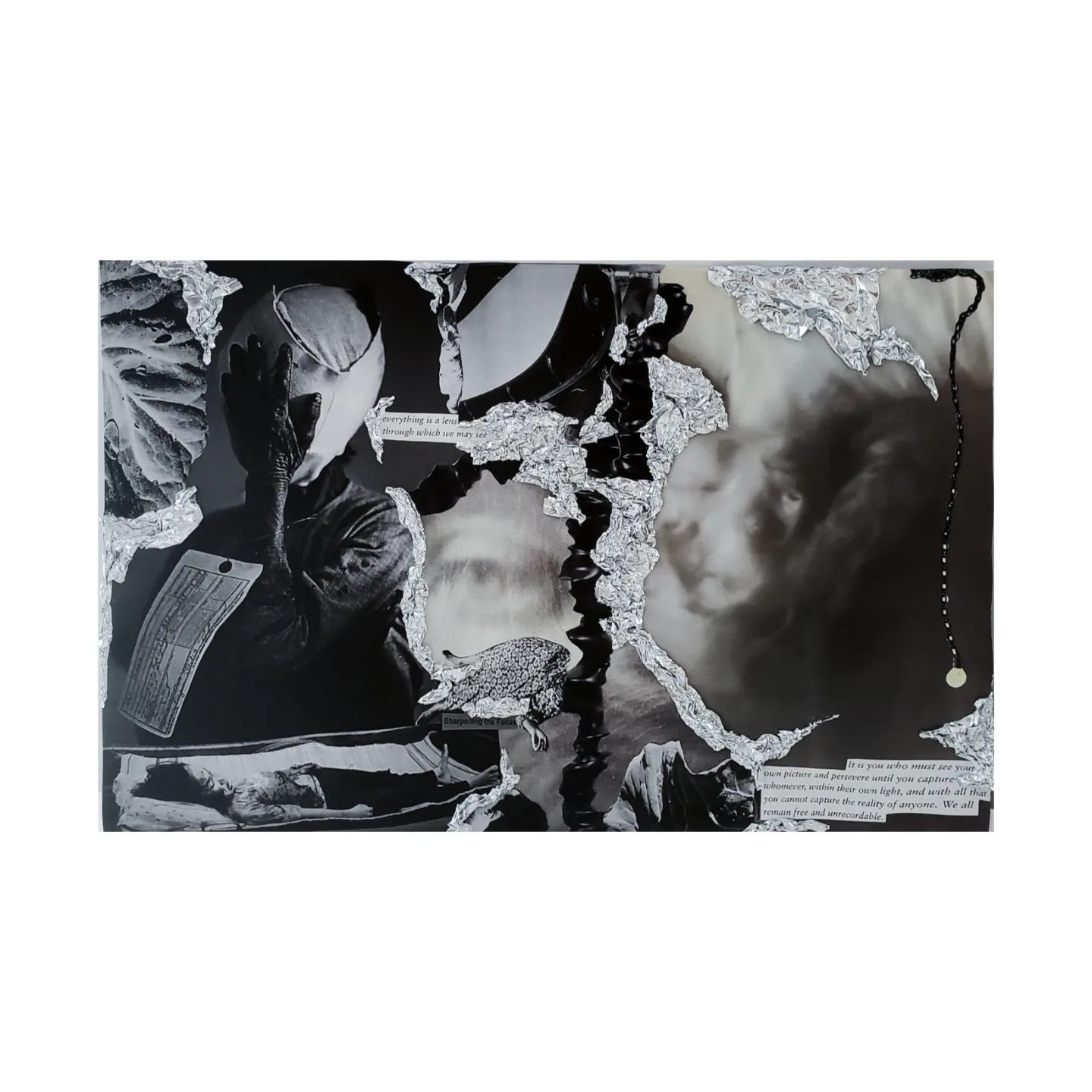
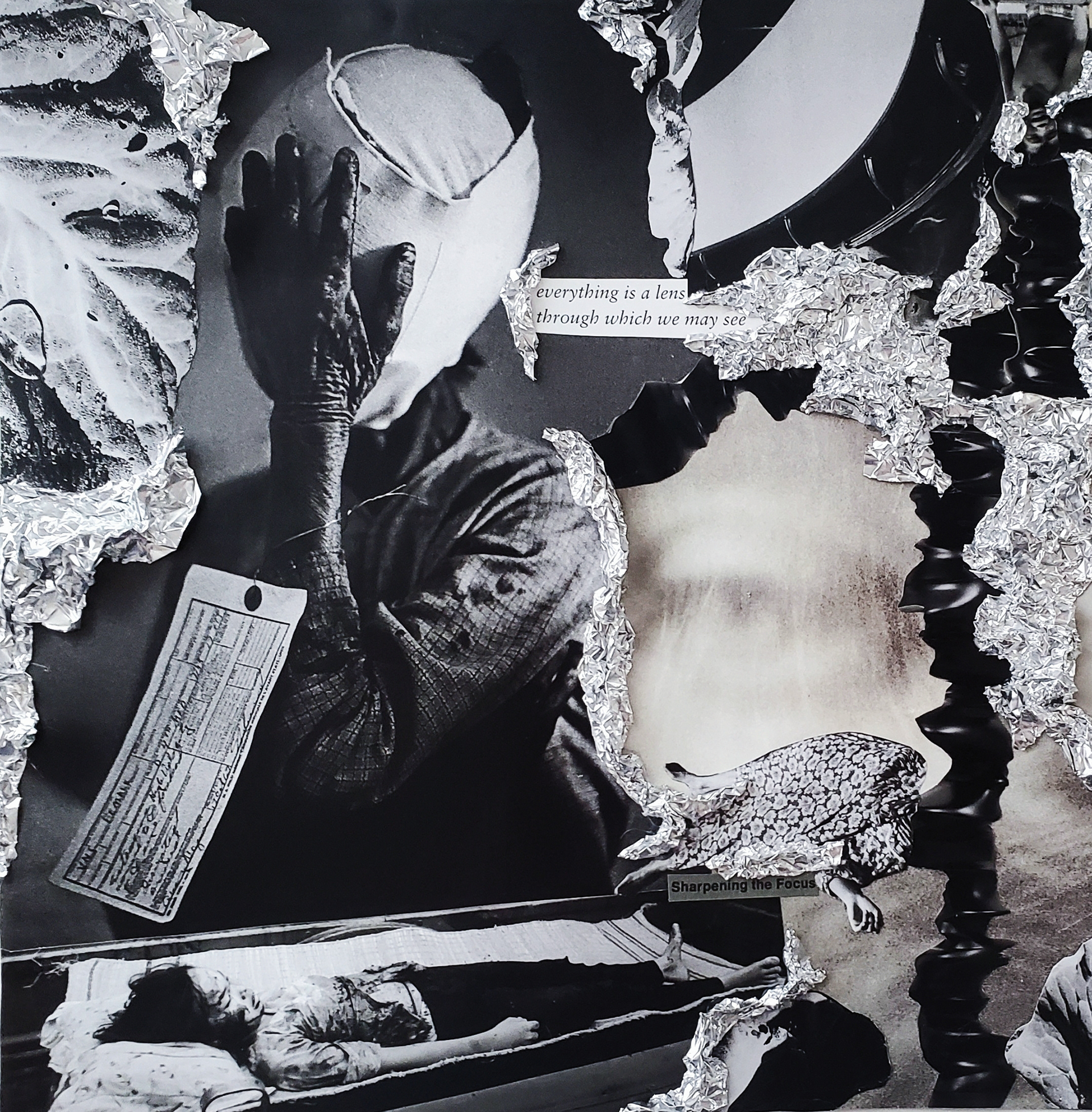
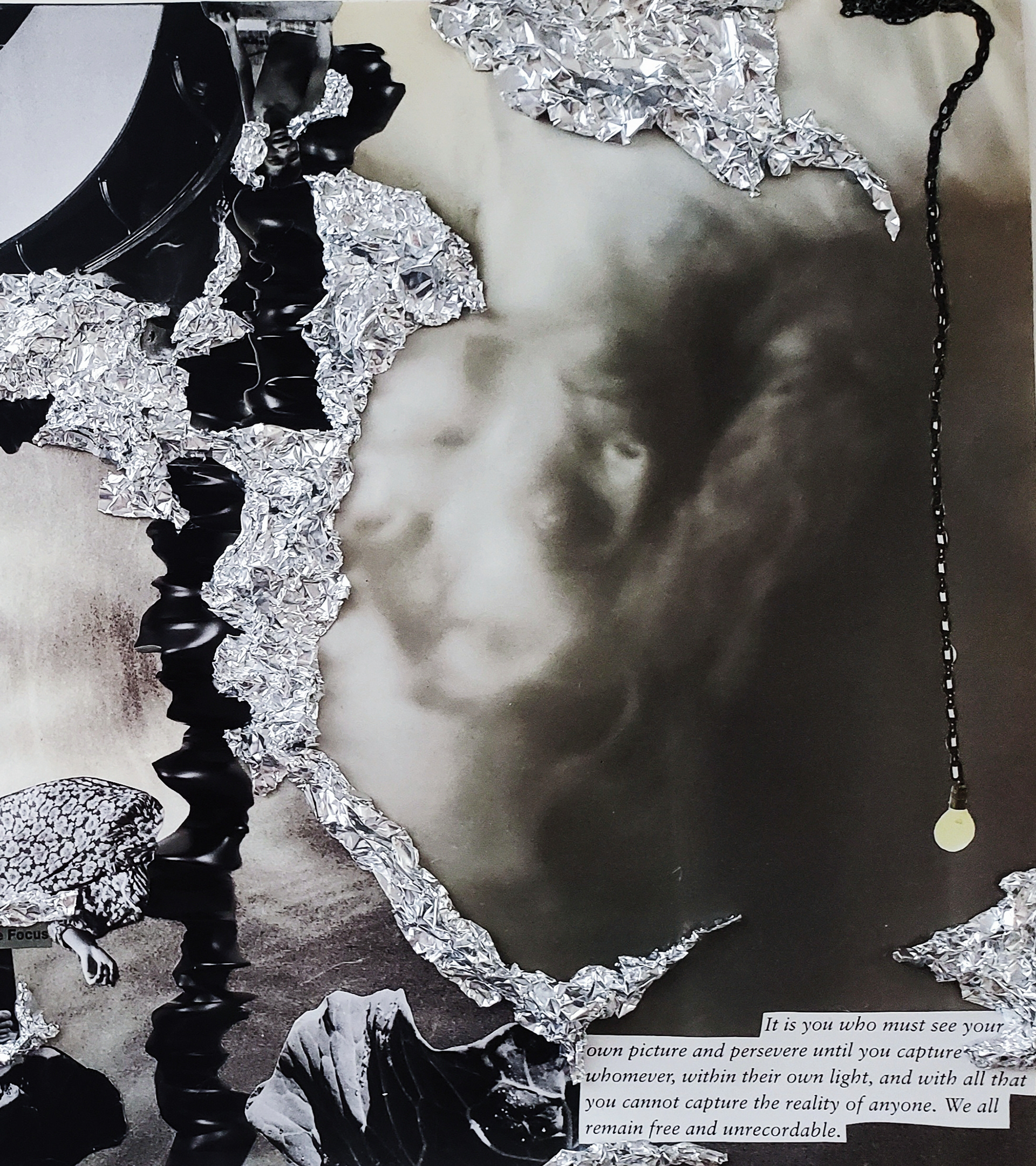
Even if I Could See, I'm Still Blind
Mixed paper, magazine clippings, and aluminum foil, 11" x
Mixed paper, magazine clippings, and aluminum foil, 11" x
17"
It's easy to see but challenging to observe. Adhering to the definition of observation found in "The Art of Scientific Investigation:" observations involve two elements a) the sense-perceptual element (usually visual) and b) the mental element which may be partially conscious or unconscious.
It's easy to see but challenging to observe. Adhering to the definition of observation found in "The Art of Scientific Investigation:" observations involve two elements a) the sense-perceptual element (usually visual) and b) the mental element which may be partially conscious or unconscious.
How is observation applied to self-perception?
This work touches on the delicate interplay between the sense-perceptual element, sight, and the mental elements, conscious and unconscious, in constructing self-perception.
Our mind can be both our salvation and our destruction here. For those with impaired sense-perception, visual acuity, and/or mental abilities due to disease or trauma, self-perception is fundamentally altered.
Our mind can be both our salvation and our destruction here. For those with impaired sense-perception, visual acuity, and/or mental abilities due to disease or trauma, self-perception is fundamentally altered.
How is your reliance on both sense-perceptual elements and mental elements (both conscious and unconscious) utilized in your construction of your self-perception?